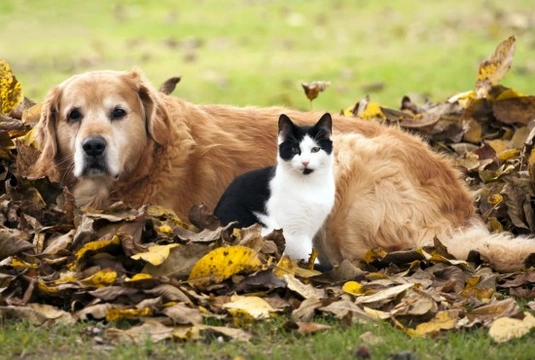
Vomiting, regurgitation and expectoration in cats and dogs - The difference
If your cat or dog is sick and brings up their meal, bile or some other productive substance, the pet owner usually refers to this as vomiting, and describes it as such when explaining events to the vet. Understandably, dealing with pet sick is one of the less pleasant sides of pet ownership, and we tend not to examine the results of sickness too closely when clearing it up, in order to avoid making ourselves sick in turn due to the unpleasantness!
However, throwing up or being sick and what is produced as a result of this is divided into three distinct categories, and each of them are indicative of rather different processes and problems. When you explain to your vet that your pet has been sick, the first thing that they will do is attempt to establish what “type” of sick your pet has produced, as this is an important part of diagnosis.
As the vet is generally unlikely to be present when your pet is physically sick, gleaning this information from examination and talking to the pet owner can be a challenge. Learning the difference between the three different types of production that can occur with throwing up, and being able to inform your vet of exactly what occurred is a valuable skill for the pet owner, and one that is easy (if somewhat icky!) to learn.
Read on to learn more about vomiting, regurgitation and expectoration in pets, and how to tell the difference.
Vomiting
“Vomiting” is generally the catch-all title that pet owners use to describe their pet’s sickness, but depending on how it occurs and what is produced, may not always be accurate. While vomiting is the most common form of throwing up in pets like cats and dogs, it is not the only option!
True vomiting can be identified by the presence of all of the following factors.
Vomiting is an active process, and generally your pet’s whole body will be involved in expelling the contents of the stomach. Your cat or dog will take on a hunched up, head forwards position, and will begin to feel physically sick. They may begin to drool or drip saliva from the mouth, and the walls of the abdomen will pulse and contract as the stomach rebels and begins to turn out its contents. Your pet may at this point begin making the signature noises that we usually associate with accompanying vomiting, and their bodies will pulse as the body expels the contents of the stomach. Many pets will scoot backwards while this happens, leaving a trail of vomit in their wake!
Vomitus (what is produced from vomiting) will often contain bile, and if the production contains bile then you can definitively identify vomiting. Other contents thrown up will also be much less identifiable than you will see with regurgitation, and will be at least partially digested. However, vomiting does not always produce bile, and so you should not rule out true vomiting if bile is not present.
Regurgitation
Regurgitation is commonly mistaken for vomiting, but is a very different process and should be described as such. Unlike vomiting, regurgitation is passive, and does not involve a feeling of nausea or the involvement of the whole body, so neither you nor your pet will get much warning if they are about to regurgitate.
Regurgitation involves your pet simply spitting back up the things that they have recently consumed, such as food or water. Regurgitus is the name given to the production of regurgitation, and this is usually very distinct in appearance to the productions achieved with vomiting. Regurgitus will never contain bile, although it may be coated with a sheen of mucous. Usually regurgitus will contain identifiable food or evidence of what has recently been consumed, and liquid such as water if this has been drunk recently.
Just to further raise the “ick” factor, many cats and dogs will attempt to eat their regurgitus, and this rarely occurs with vomiting.
Expectoration
Expectoration is the third corner of our rather gross triangle, and is generally distinct from both vomiting and regurgitation, and easier to identify from the others. Expectoration refers to the process of coughing up something from the lungs, such as mucous, phlegm, or food or drink that has gone down the wrong way. Cough medicines for people are often described as an expectorant, or something that is designed to clear mucous and fluid from the lungs.
Expectoration is always identifiable from vomiting or regurgitation because it begins with coughing, and the resultant pile of nastiness that your pet produces subsequently comes from the lungs or windpipe, rather than the stomach.
An extremely severe, prolonged and ongoing coughing fit can ultimately cause vomiting as well, due to the agitation caused to the stomach, but this is highly uncommon and severe enough to require a veterinary visit in its own right.
Conclusion
As you can see, vomiting, regurgitation and expectoration may appear to be the same or closely related at a glance, but in fact, are totally different processes. It is important that your vet can determine which your pet is doing in order to narrow down the range of potential diagnosis, and know how to provide the appropriate treatment for the condition.
One way of doing this is by asking the pet owner to take in a sample of the product that is thrown or coughed up for examination, but if you can explain to your vet that you understand the difference between the three processes and have identified exactly what is happening to your pet, this can often be avoided.



